If you are in Luang Prabang, you should not miss the opportunity to visit the historic Ban Chan Pottery village, which is just a short ride across the Mekong, from the ferry pier (one way costs 5,000 kip per person; or 10,000 kip if you are on a motorcycle or bicycle – these are the prices for farangs, the foreigners).
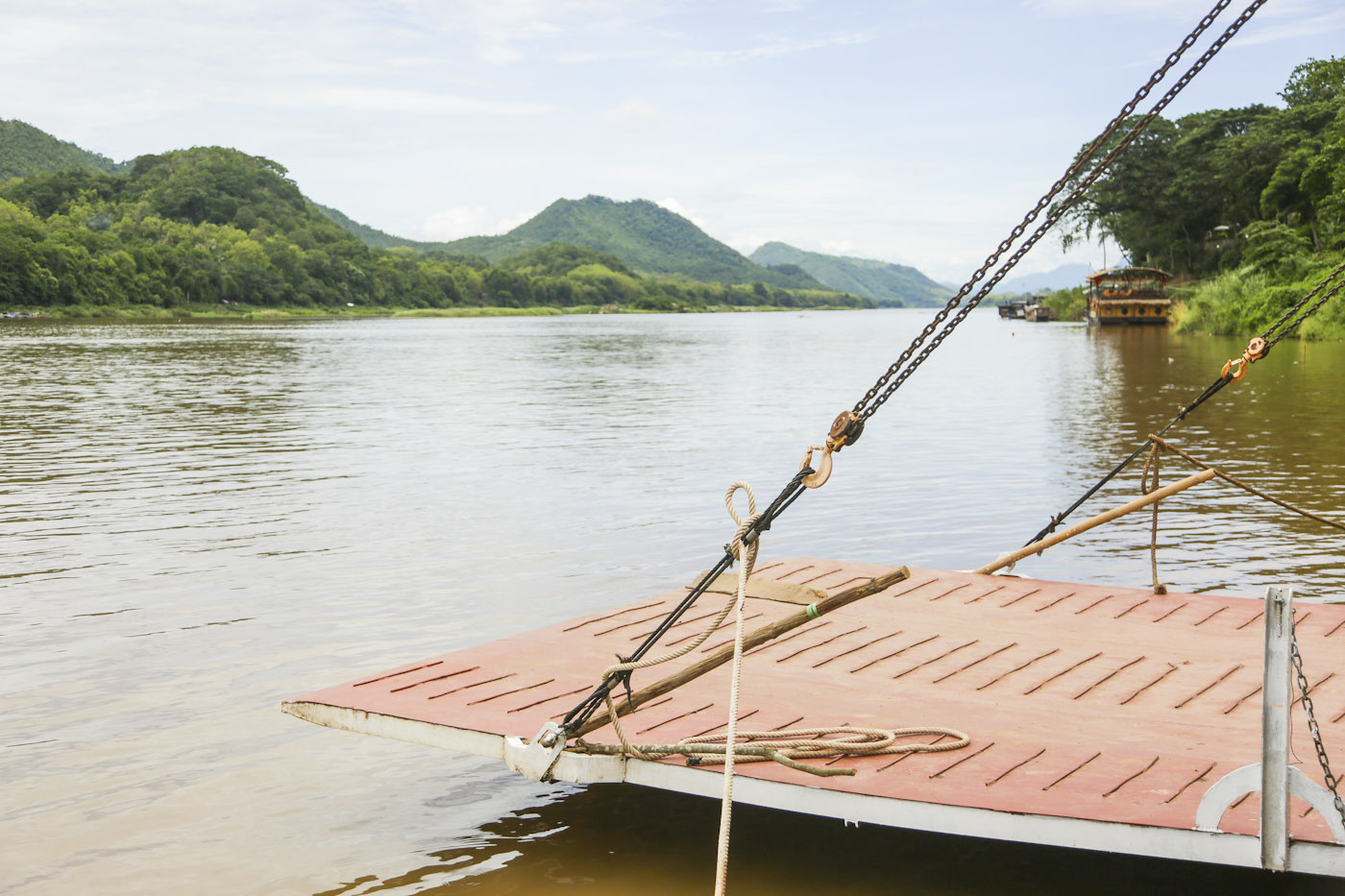
The steep ride from the pier is the most difficult part of the way. After you reach the top of the hill, you will go down for some metres. Be attentive to the signs on the road, not to miss the left turn that leads to Ban Chan.
The village is a unique opportunity to get to see artisans creating Lao traditional ceramics by the means of ancient techniques which they have been using for centuries. Besides learning about the entire process of creation, you can also take a workshop with one of the families in the community and make your own ceramic piece to take home with you.
Ban Chan gives the opportunity to get to see artisans creating Lao traditional ceramics with techniques that are over 400 years old.
The clay they use in the village is dug locally but It needs to be refined before usage. Before adding the clay to the clay grinder they dry it and then soak it in water for 24 hours. Only then the clay is ready to be kneaded (by hand or feet), long enough until it gets a smooth and soft texture.
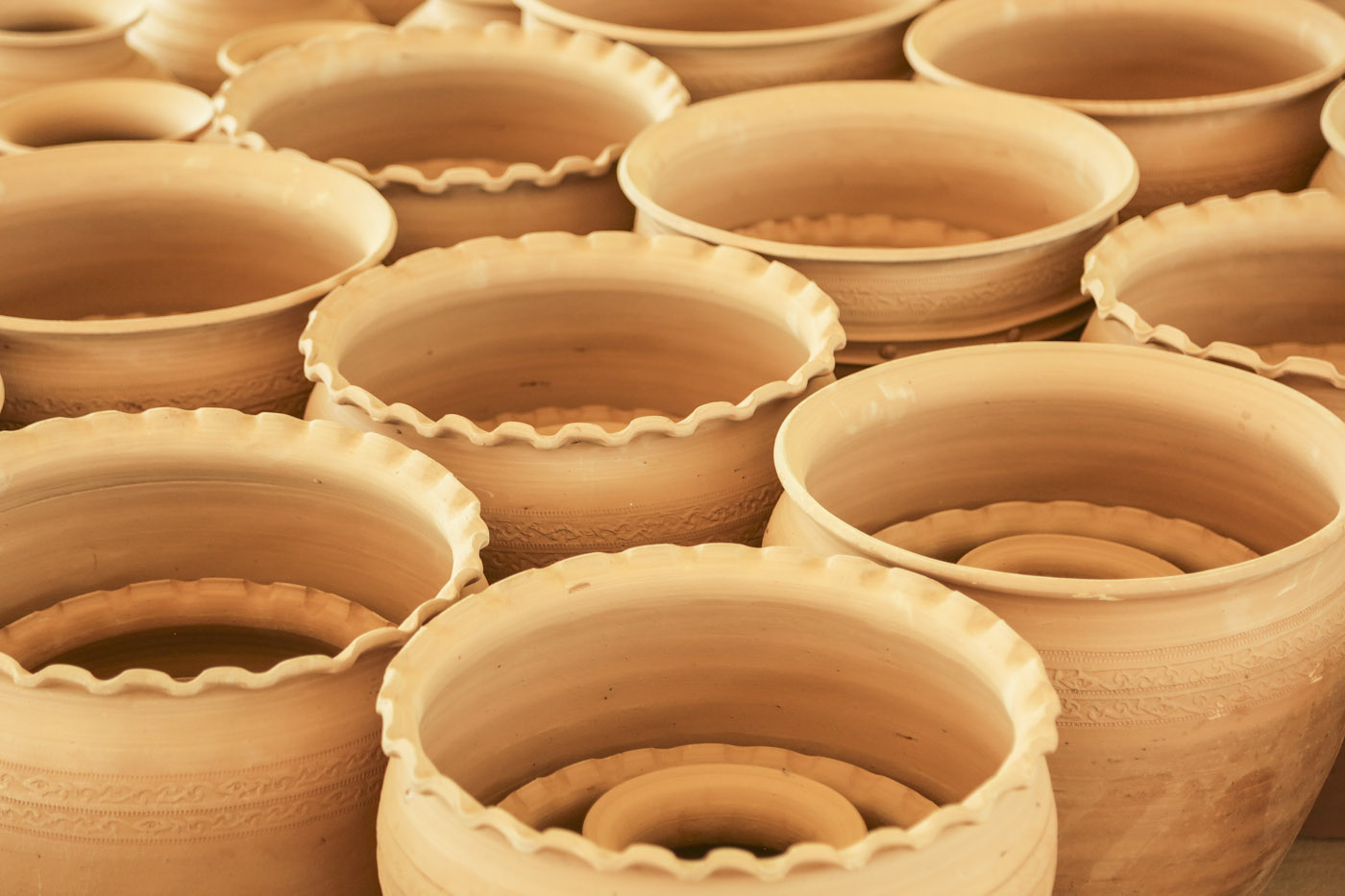
The Communal Pottery Centre
As soon as we arrived at the pottery centre, we were welcomed by a girl who took us to a covered open yard where a dozen potters were working on their wheels. All around we saw a huge amount of terra-cotta pots that looked finished, but that are actually drying in the open air. The pottery dries for at least three days, before they stack them in the communal kiln. We realised then that all the beautiful pots and lamps we have seen in the gardens and hotels of Luang Prabang must have their origin here.
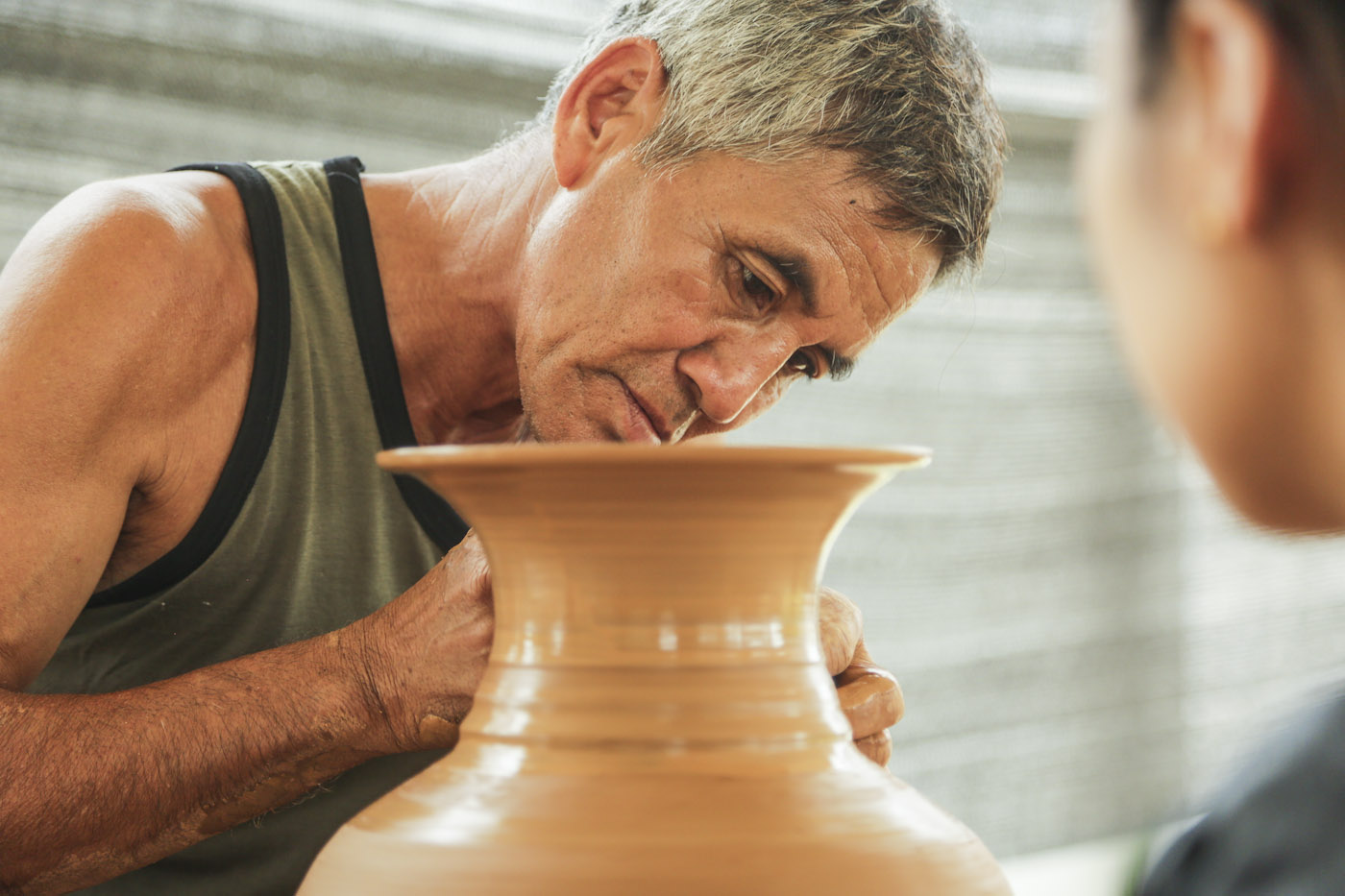
After watching the peaceful movements of the duo of potters (the daughter spinned the wheel manually while her father, the potter, worked on the wheel) shaping their new creations, we went to the shop, where many pieces were on sale. From ornamental elephants, lamps, jars to everyday kitchenware such as plates or bowls, we found some lovely pieces that we brought home with us. Many of the pieces have been decorated by pressing motifs on the surface of the wet clay with hand-made tools. You will have to resiste the urge to buy way too many things, so beautiful these ceramics are.
How Does the Kiln Work?
Without the modern electric ovens, which include thermometres to measure the temperature or thermostats to keep the temperature regular, the artisans use long acquired knowledge to recognise the appropriate temperature inside the kiln. It is interesting to see that, being the firing process a complex one, the community does it together in large kilns that can stack up to three hundred pieces of pottery.
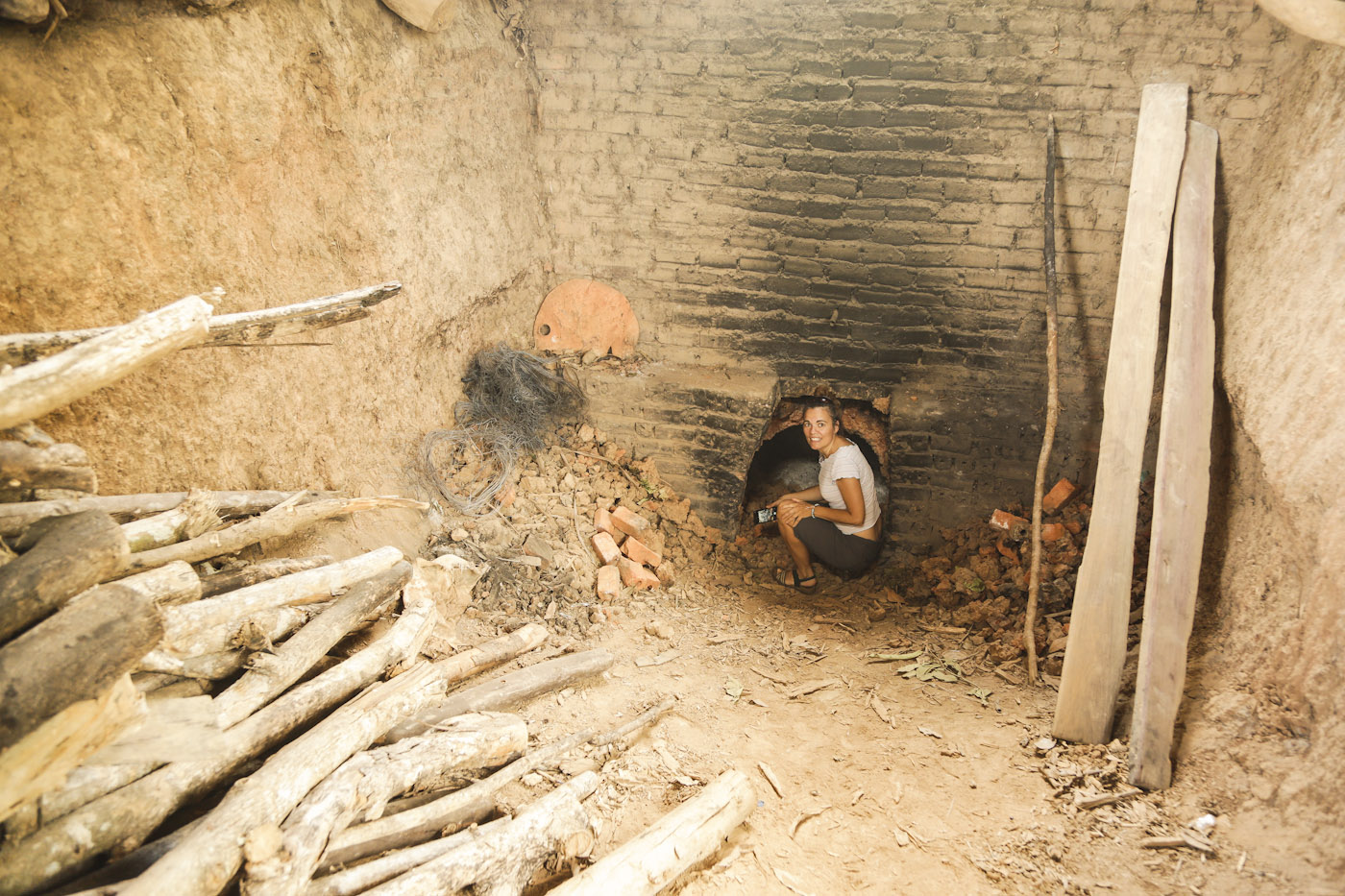
Once they have a number that will fill the kiln, they put the pieces inside and light a big fire at the entrance of the kiln. Making a fire requires a lot of firewood and a lot of attention. The firing process takes about two days, until the temperature inside reaches around 1,000 degrees Celsius. As soon as the fire flames come out of the chimney for three times in a row, the firing process is complete and the kiln is closed up. The pottery remains in the sealed kiln for another three days to cool down.
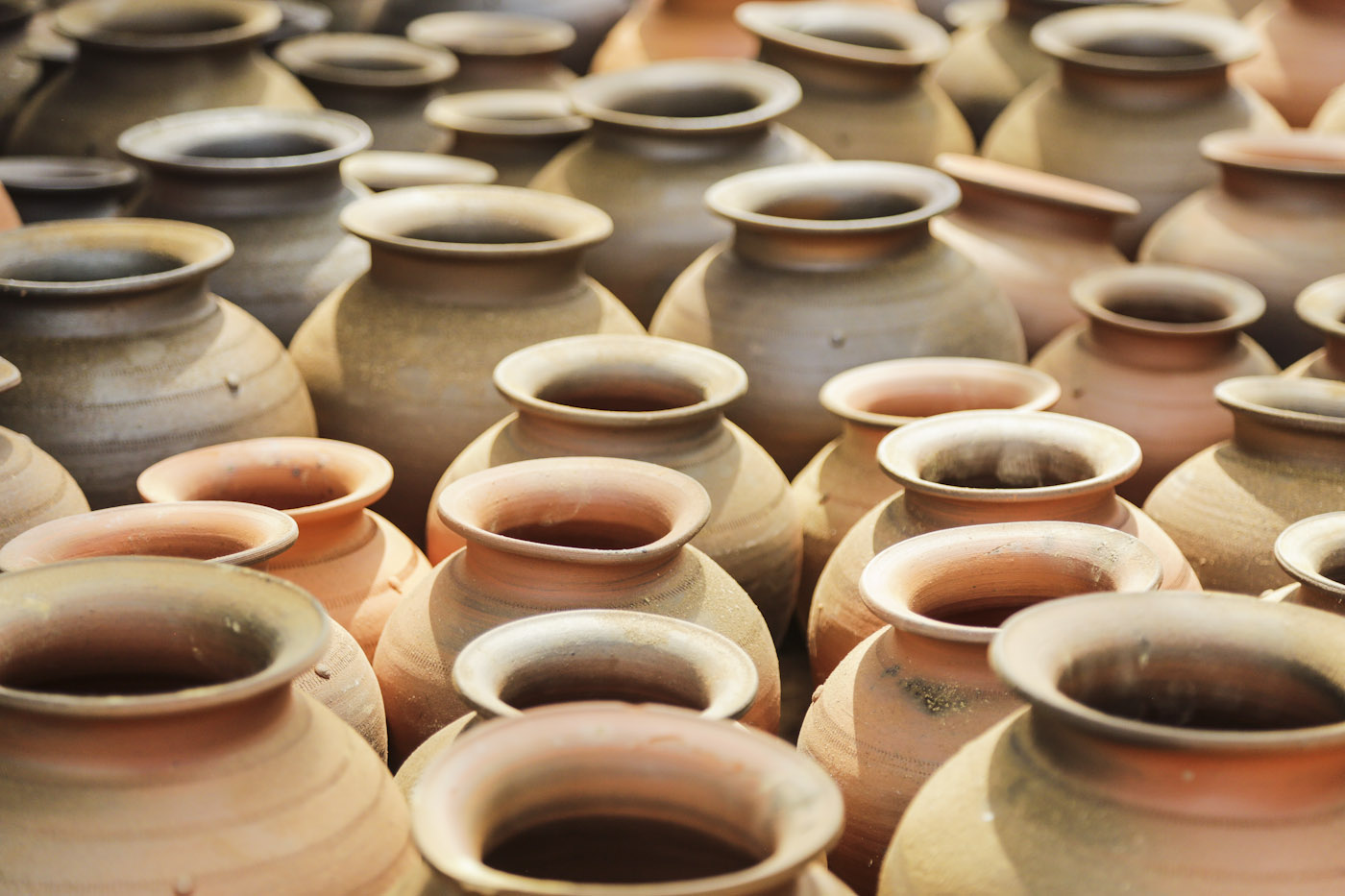
The entire process (two days of firing + three days of cooling) takes five days. After that time, the potteries are ready to be removed from the kiln. A process that also needs to be done with a lot of care, in order not to break any of the fragile pottery pieces.
The Legend about the Pottery Village
According to popular folklore, King Chao Fa Ngum united Laos and ordered the people of Ban Chan to produce pottery to celebrate his victory. They made pots and mortars and jars to keep alcohol and water, as well as the popular hai for fermented fish. So this confirms that pottery has been made in the village for over 400 years.
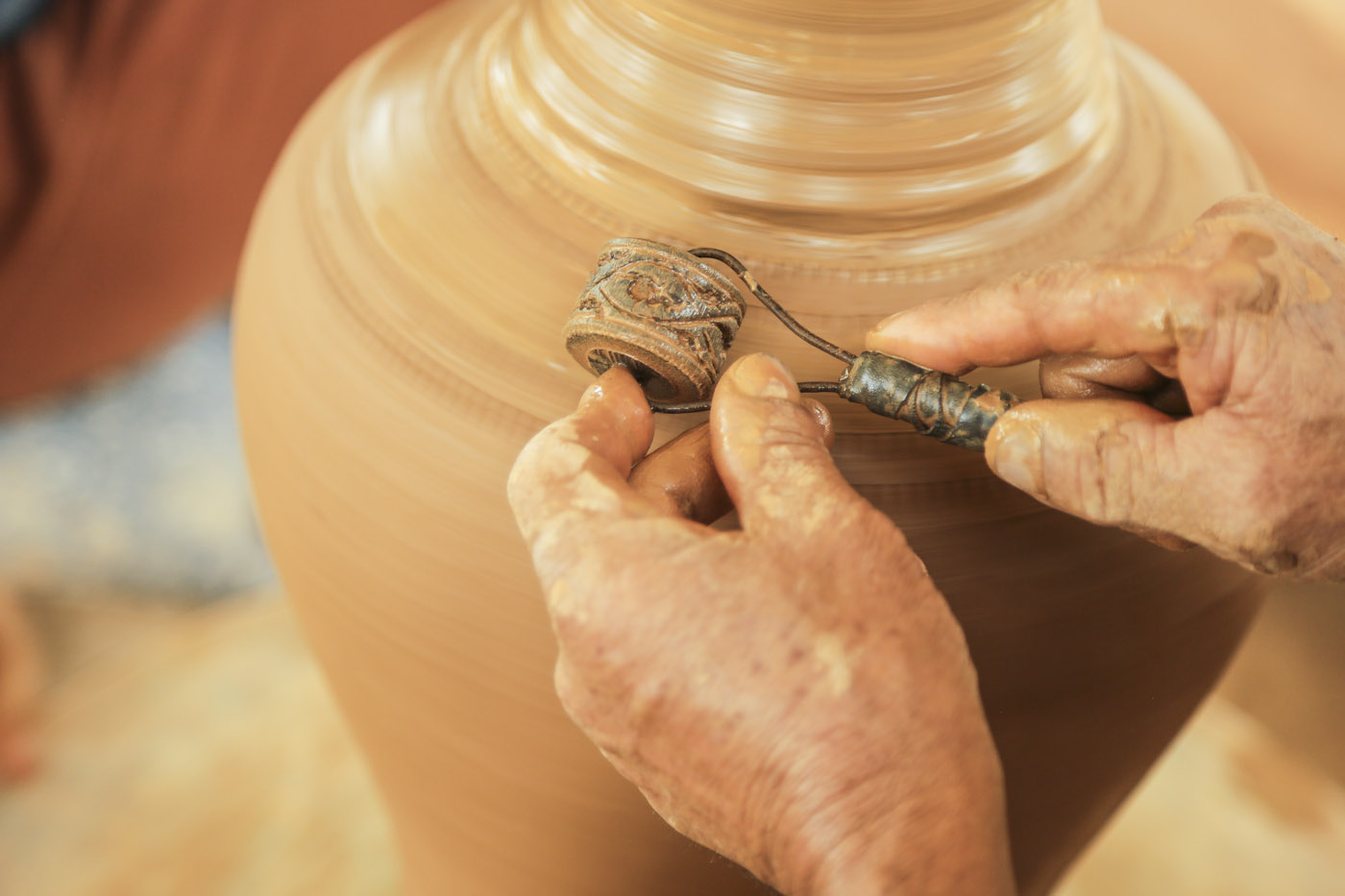
After Visiting the Pottery Centre
After visiting the pottery centre, you shouldn’t miss te opportunity of a stroll through the rest of the pottery village. You will get to see how each family has its own small workshop where they are producing their pottery pieces, which you can buy directly through them. You can also have lunch on one of the few restaurants, or even better, have one of the best ice-creams in Laos, in the Bamboo café and restaurant.
After strolling through the village, we took the direction of the ferry pier, but before descending to the margin, we turned left to have a visit of Xieng Men cultural village and the circuit of seven temples along the Mekong.
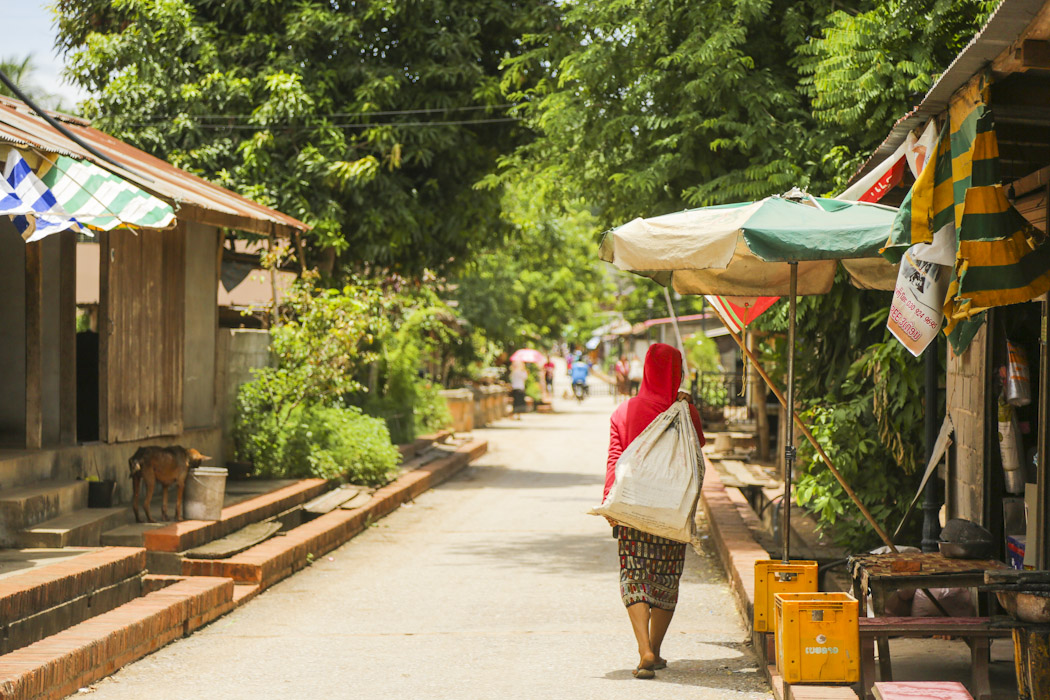
Pin For Later
Click one of the images to save it on your Pinterest


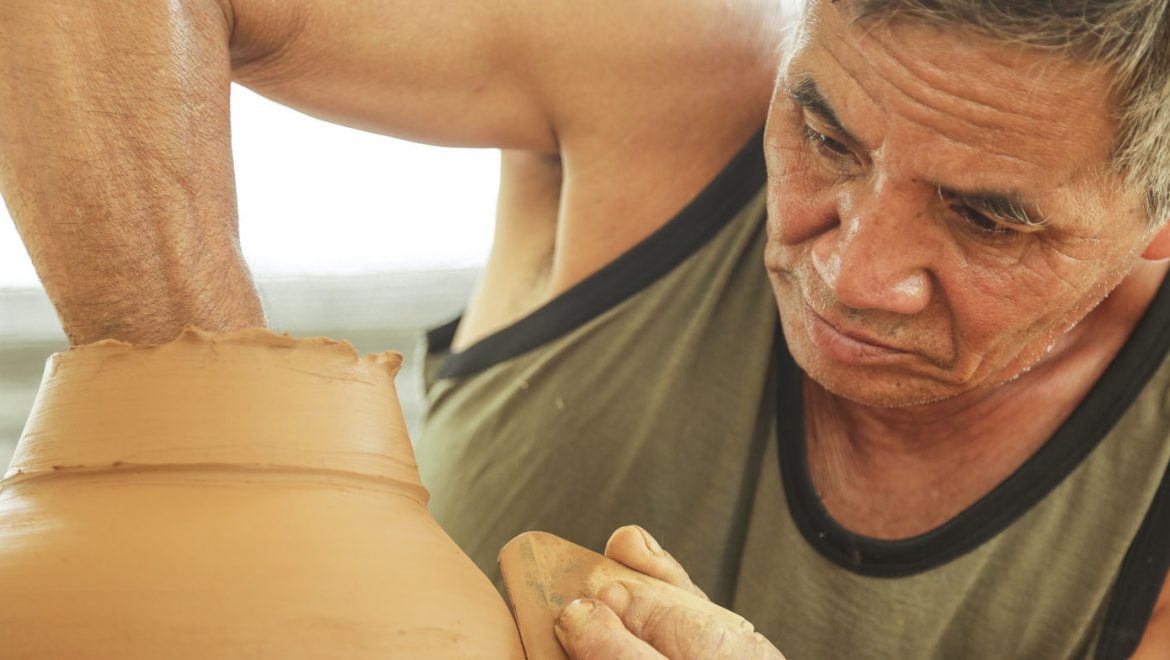
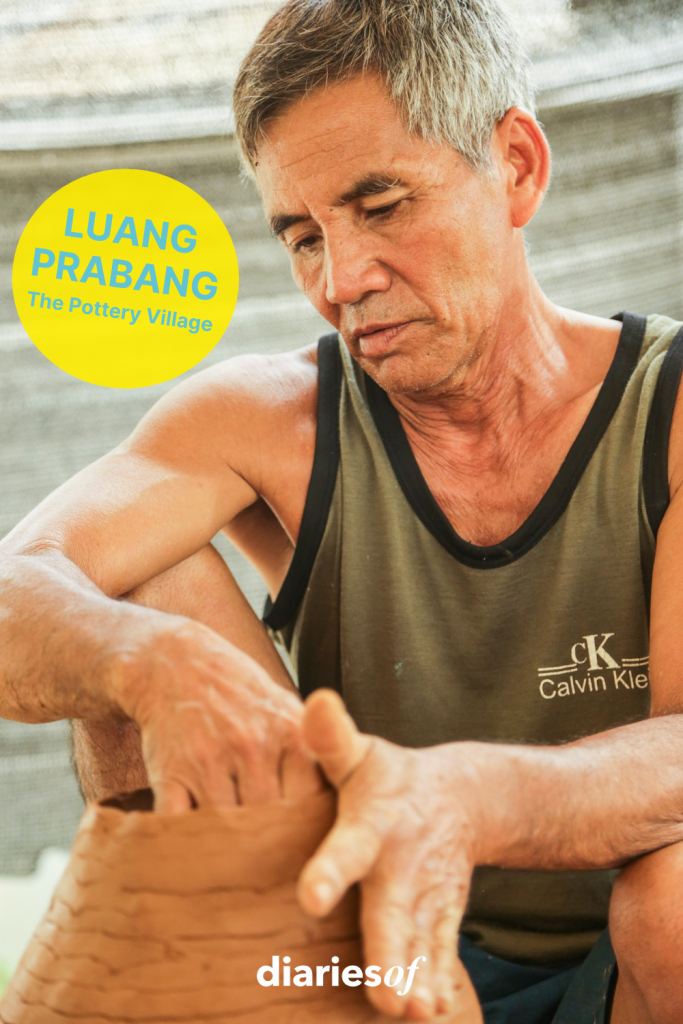
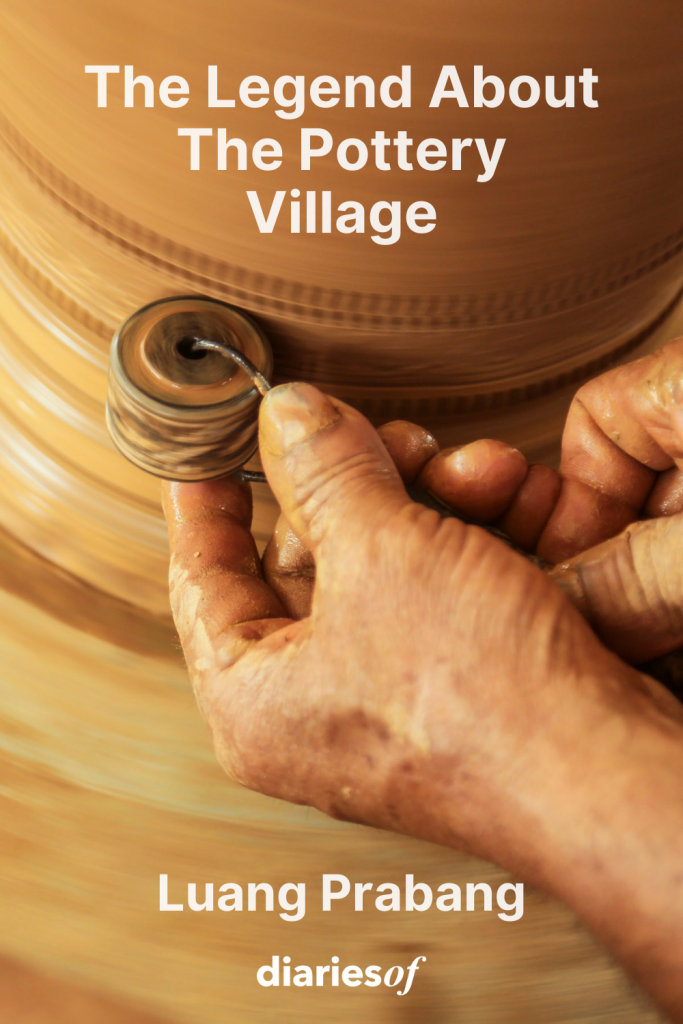
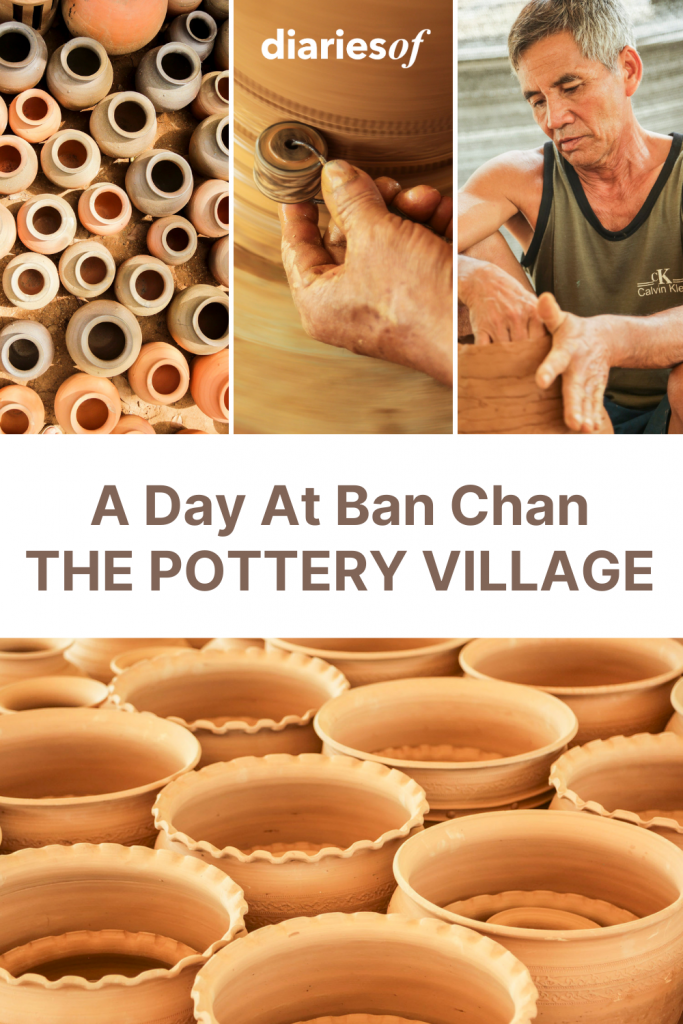


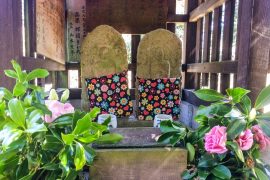
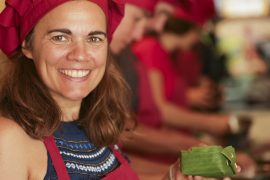




1 Comment